Nonrenewable fossil fuels are driving global climate change. With the growing demand for energy across the world, the planet must move to renewable energy sources rapidly to meet internationally agreed targets to reduce carbon emissions. Solar floating photovoltaic systems show enormous potential as part of the renewable energy mix. A 2021 paper published in the journal Energies has explored this topic of research.
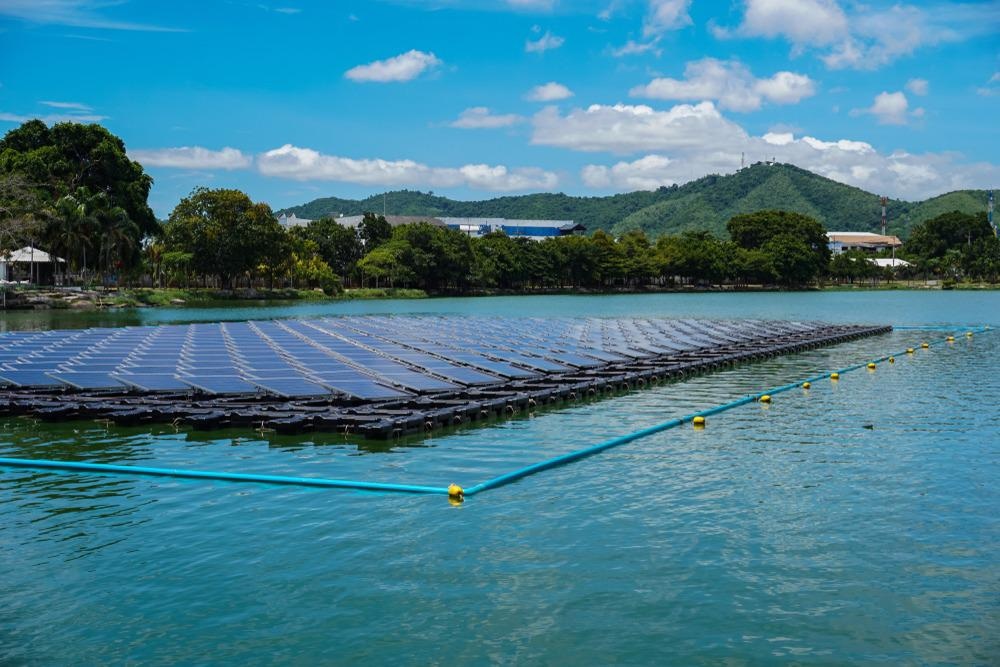
Study: Overview of Possibilities of Solar Floating Photovoltaic Systems in the Offshore Industry. Image Credit: Thaweesak Thipphamon/Shutterstock.com
Offshore Energy: A Viable Alternative to Fossil Fuels
Offshore wind turbines have been around since the early 1990s and have grown in number and areas of deployment, with tidal and wave power also in the mix. Growth in energy consumption, environmental issues, and a lack of habitable land has led to the increasing deployment of energy production in offshore areas.
Solar floating photovoltaic systems (FPVs) are a new solution. However, offshore solar energy solutions have been largely unexplored thus far, even though most of the exploitable energy in marine environments comes from the sun. It is estimated that as much as 70% of the global energy supply in the oceans is solar.
A Brief History of Solar FPVs Worldwide.
The US and Japan were the first countries to install solar FPVs. In 2007, the first commercialized FPV plant was deployed in a reservoir in Napa Valley, California with the aim to prevent evaporation from the reservoir. Japan installed their first FPV systems in the same year, with a capacity of 20kW. Other countries soon followed suit including S. Korea, France, and Italy.
A sea change occurred with the installation of a 500kW project in Bubano, Italy in 2009, a collaborative effort between four companies. There have been many solar FPV projects worldwide, including a 24kW project in Spain and a 500kWp project at Hapcheon Dam in S. Korea in 2012.
Currently, the largest five markets for FPV technologies are China, Australia, Brazil, Canada, and France. The majority of FPV projects worldwide are installed in onshore water bodies, with a small number deployed offshore. China and the Netherlands were the first to install offshore FPV projects.
Deployment of FPVs has been rapid, with solar PV energy accounting for 23.8% of total onshore and offshore marine renewable energy installations worldwide. In 2018, large FPV plants with a 150 MWp capacity were installed, heralding a step forward for the technology.
Overview of the Technology
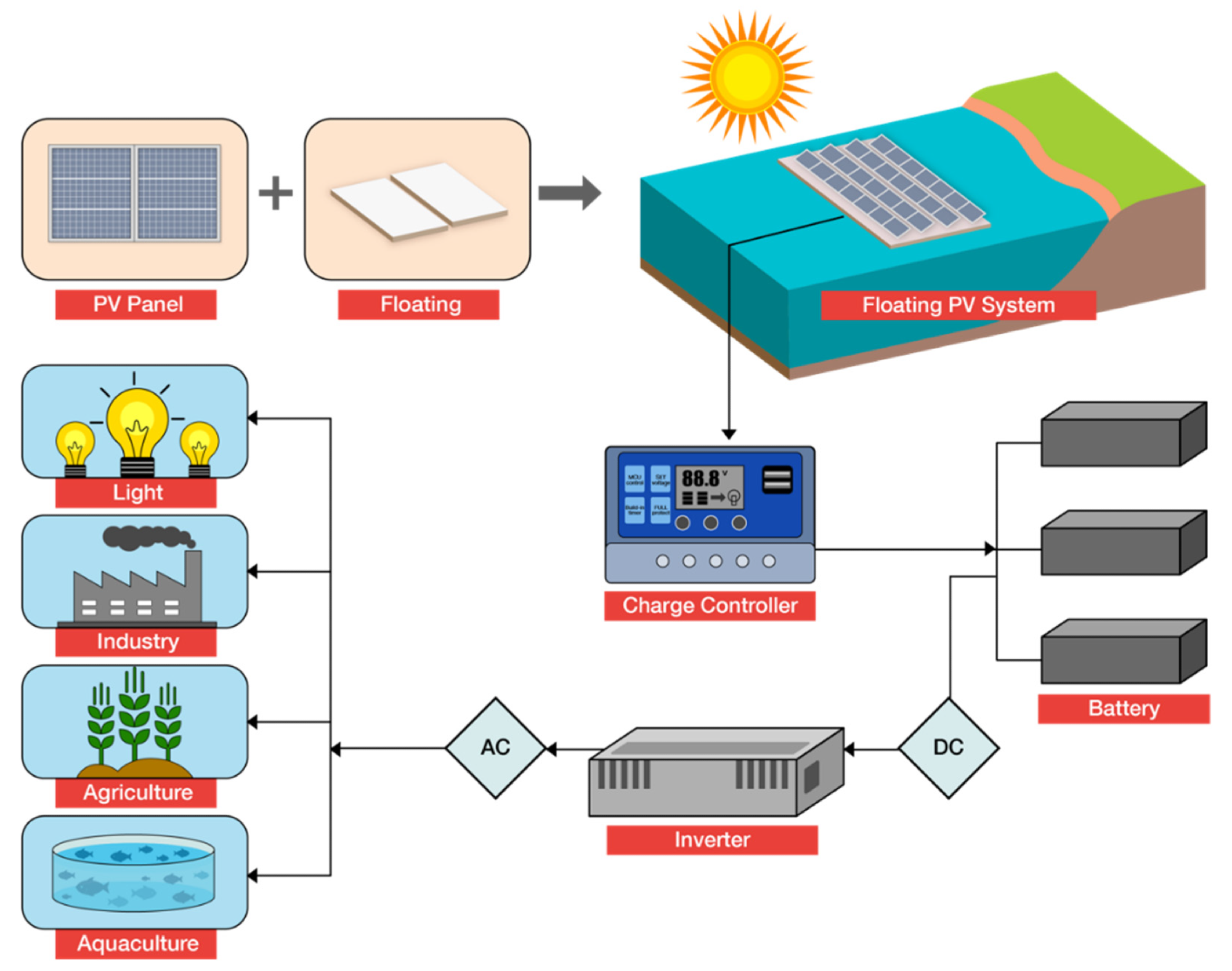
Diagram of a typical FPV system described in this review. Image Credit: Vo, T.T.E et al., Energies.
Offshore FPV installations can be deployed using methods similar to onshore installations. The FPV system consists of a few simple elements: solar PVs modules, cables, a pontoon, an independent float structure, and a system to moor the installation. First-generation solar PVs account for 95% of market share. Second-generation thin layer PVs are being explored for their potential in FPV systems.
Offshore environments present several challenges not present onshore, including wind loads, waves, and the presence of salt, which can corrode elements of the system.
Offshore FPV installations must have the ability to move around due to wind and wave action. Technical challenges such as the design of robust anchoring systems must be overcome to make the technology viable for large-scale offshore deployment.
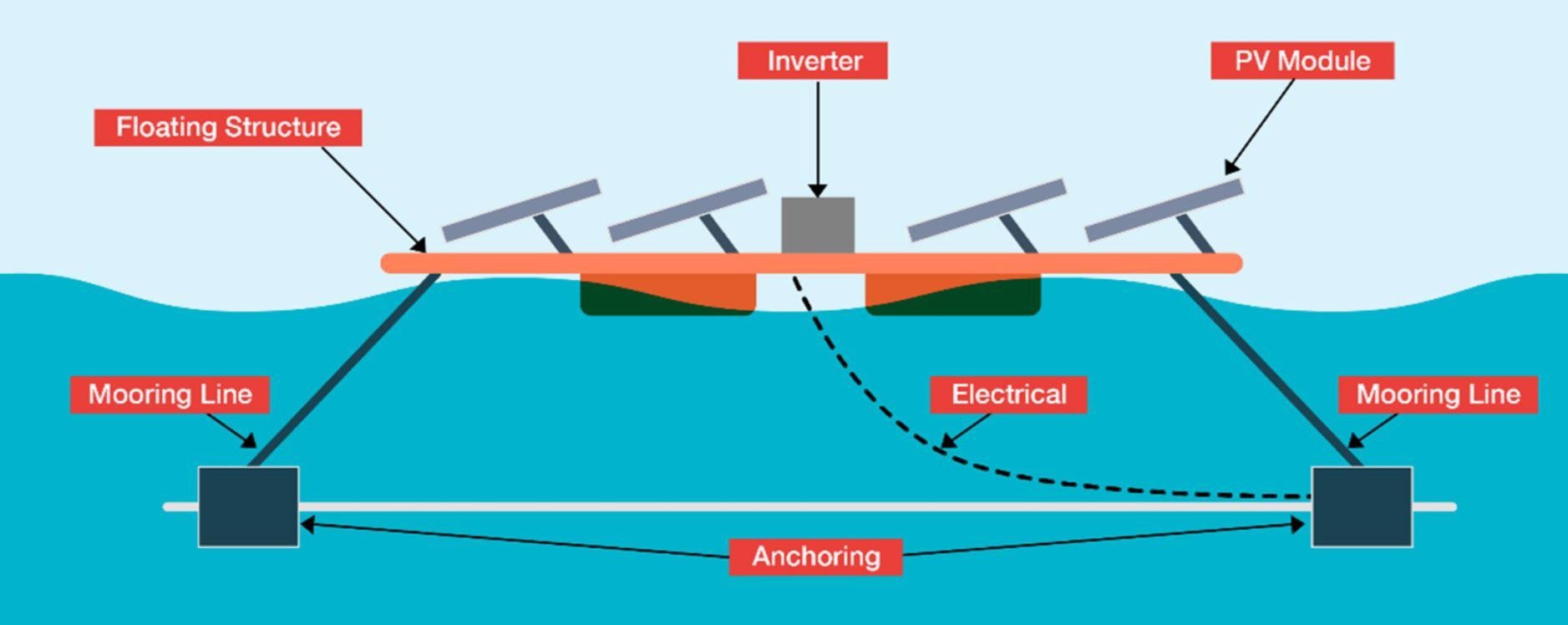
The main components of an FPV system
Advantages of Installing Solar FPVs Offshore
Offshore locations have many advantages for FPVs. This includes savings on land, the natural cooling of water bodies, lack of dust, and lack of obstacles that cause loss of efficiency due to shadows. An estimated 50% of the world’s population lives near the coast, providing opportunities to supply them with energy. Offshore platforms can also exploit energy supplied by solar FPVs.
Challenges for Offshore FPV installations.
Offshore/open sea FPV installations face many challenges. Firstly, no commercially available mooring and anchoring systems exist for FPV installations. Challenges also exist in transporting, lifting, maneuvering, and positioning the heavy structures needed for FPV projects. Cost is prohibitive compared to current alternatives such as wind power.
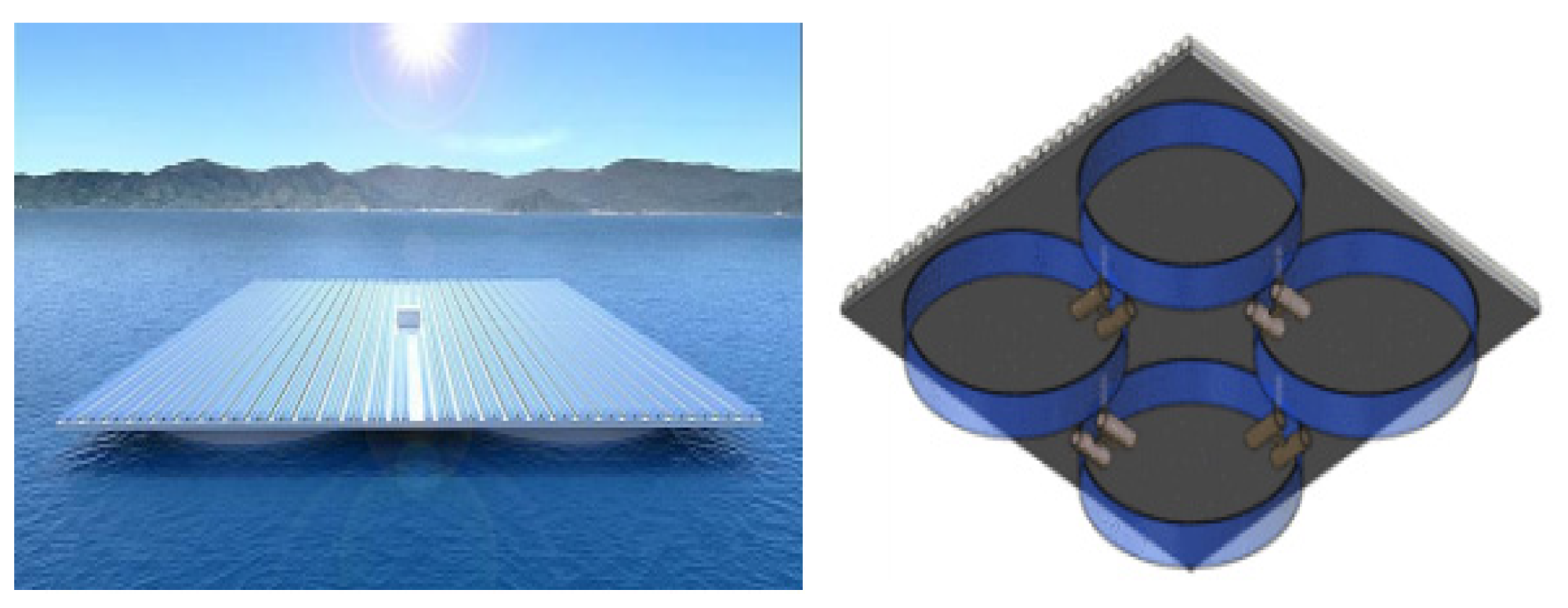
HelioFloat offshore platform. Image Credit: Vo, T.T.E et al., Energies.
Additionally, seawater causes corrosion and induced degradation of structures. Marine organisms can cause problems when they attach themselves to submerged offshore structures, changing their physical properties and size. Environmental stress cracking can occur. Birds can be attracted to the artificial shelter of an FPV system, leading to the system being damaged.
Furthermore, technical challenges occur because of the novel nature of the technology. These include a lack of specific guidelines, unavailable data on water bodies, environmental and social challenges, and FPV component safety and long-term viability.
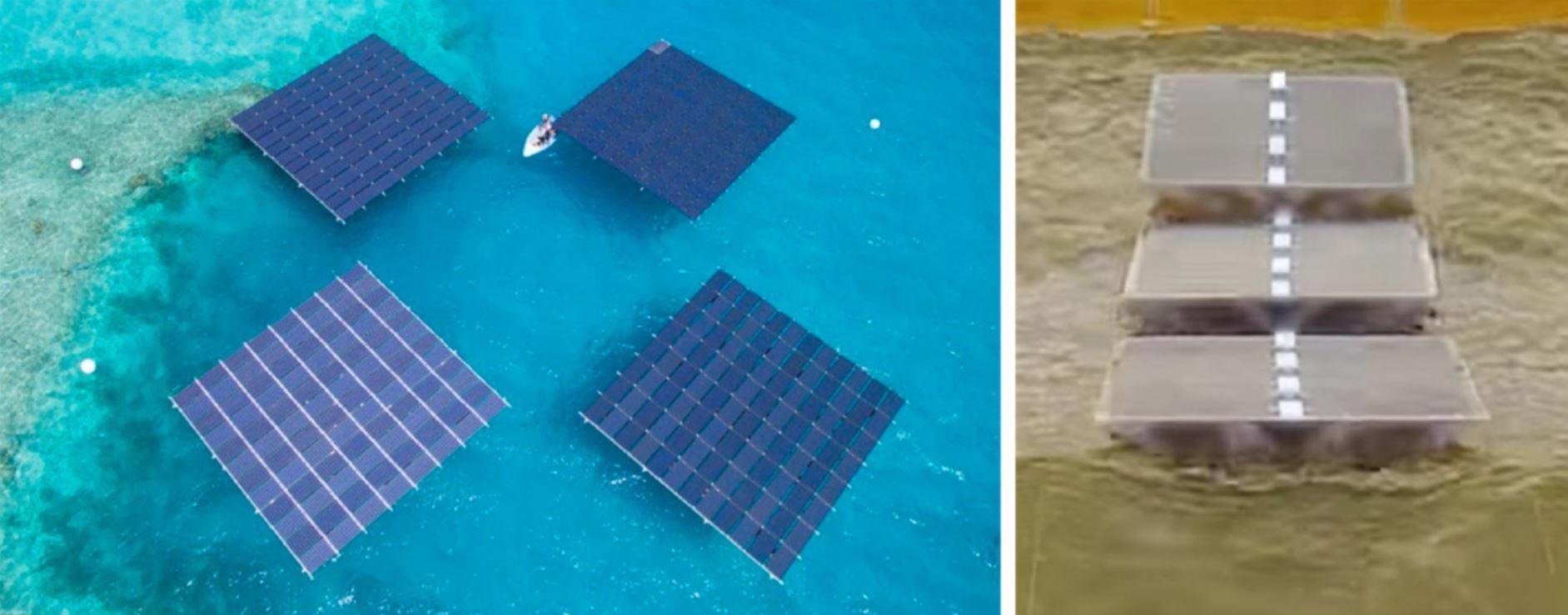
SolarSea
The Future
Solar FPVs present a noteworthy addition to the global renewable energy mix. The field has grown in recent years, with more projects being installed both onshore and offshore every year. However, challenges exist that need to be addressed by the industry if solar FPV plants are to become commercially viable.
Further Reading
Vo, T.T.E et al. (2021) Overview of Possibilities of Solar Floating Photovoltaic Systems in the Offshore Industry [online] Energies 14(21) 6988 | mdpi.com. Available at:
Disclaimer: The views expressed here are those of the author expressed in their private capacity and do not necessarily represent the views of AZoM.com Limited T/A AZoNetwork the owner and operator of this website. This disclaimer forms part of the Terms and conditions of use of this website.